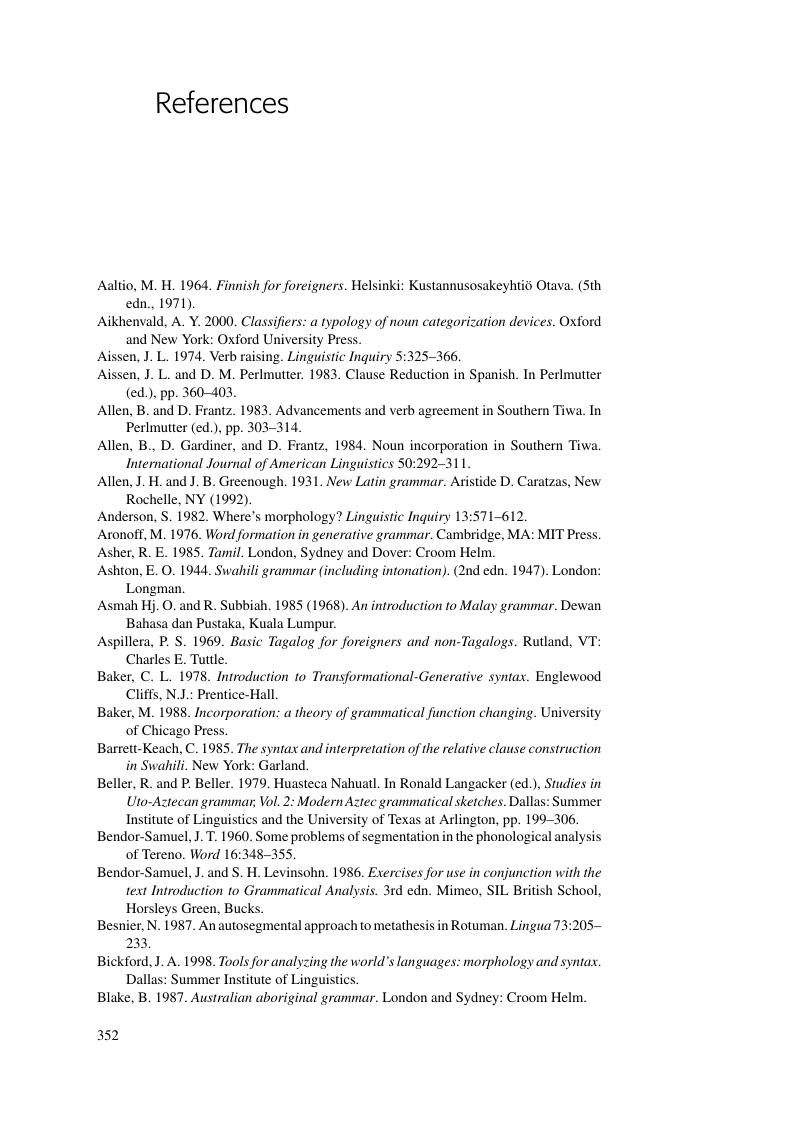Book contents
- Frontmatter
- Contents
- Preface and acknowledgments
- List of abbreviations
- 1 Grammatical form
- 2 Analyzing word structure
- 3 Constituent structure
- 4 Semantic roles and Grammatical Relations
- 5 Lexical entries and well-formed clauses
- 6 Noun Phrases
- 7 Case and agreement
- 8 Noun classes and pronouns
- 9 Tense, Aspect, and Modality
- 10 Non-verbal predicates
- 11 Special sentence types
- 12 Subordinate clauses
- 13 Derivational morphology
- 14 Valence-changing morphology
- 15 Allomorphy
- 16 Non-linear morphology
- 17 Clitics
- Appendix: Swahili data for grammar sketch
- Glossary
- Reference
- Language index
- Subject index
- References
Reference
Published online by Cambridge University Press: 05 June 2012
- Frontmatter
- Contents
- Preface and acknowledgments
- List of abbreviations
- 1 Grammatical form
- 2 Analyzing word structure
- 3 Constituent structure
- 4 Semantic roles and Grammatical Relations
- 5 Lexical entries and well-formed clauses
- 6 Noun Phrases
- 7 Case and agreement
- 8 Noun classes and pronouns
- 9 Tense, Aspect, and Modality
- 10 Non-verbal predicates
- 11 Special sentence types
- 12 Subordinate clauses
- 13 Derivational morphology
- 14 Valence-changing morphology
- 15 Allomorphy
- 16 Non-linear morphology
- 17 Clitics
- Appendix: Swahili data for grammar sketch
- Glossary
- Reference
- Language index
- Subject index
- References
Summary

- Type
- Chapter
- Information
- Analyzing GrammarAn Introduction, pp. 352 - 359Publisher: Cambridge University PressPrint publication year: 2005

